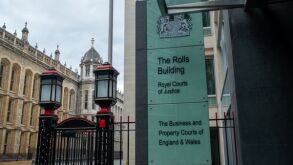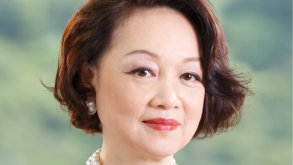Evidence is one of the fundamental elements of IP infringement litigation. Since there is no US-style discovery in China, burden of proof is mostly borne by the plaintiff, who has to produce evidence to prove almost all the important facts for infringement, such as infringing acts, accused infringing products, profits gained by infringement and so on. Further, due to the lack of a mature credit system in society, strict requirements are applied to formalities for evidence to guarantee authenticity and legitimacy of evidence. In practice, such evidence rules cannot be regarded as plaintiff-friendly. Indeed they could even be considered somewhat burdensome, causing the plaintiff difficulty in enforcing IP rights.
As China is developing rapidly, strong and fast IP protection is taken as a fundamental strategy for the building of a sound business environment to guide an innovation-driven economy. In October 2019, the Supreme Court issues an updated Evidence Rules in Civil Legal Procedure (effective from May 2020) to adjust evidence collection actions.
I. Important procedural issues for evidence
1. Evidence sanction mechanism
One of the most important improvements is the establishment of an evidence sanction mechanism, which is especially applied to documentary evidence, including accounting books and financial materials, to force defendants to submit evidence under their control. The plaintiff should first provide some preliminary evidence to prove the existence of the evidence controlled by the defendant. Then if the defendant refuses to submit such evidence without reasonable excuses, the related evidence from the plaintiff shall be accepted by courts as supporting evidence favourable to the plaintiff.
For instance, in IP infringement cases, plaintiffs will generally submit some evidence to prove sales amounts using some financial reports or e-business platform statistics. This evidence rule shall force the infringer to submit financial records for sales amounts of infringing products under its control. If the infringer refuses to do so, the evidence from the plaintiff may be relied on to calculate profits gained by infringement, providing a starting point for measuring the specific amount of damages.
This evidence rule has been applied in a couple of IP infringement cases and proved to be effective. For example, in VMI Holland v Shuangjun Plastics, VMI Holland, the plaintiff, submitted evidence proving sales amounts for infringing tyres, price and the industry average profit rate and requested the court to order the defendant Shuangjun Plastics to submit accounting books related to infringing products. This was approved by the court. However, the defendant Shuangjun Plastics did not submit as required in the first and second instance. Finally, Guangdong High Court relied on the financial materials from the plaintiff to award damages of 3 million RMB (430,000 USD).
2. Evidence deadline
The evidence deadline is a decisive factor in whether evidence can be admitted by courts. In a general sense, the evidence deadline can be understood as neither extremely strict nor very flexible in China. Parties in the lawsuit have the right to negotiate the evidence deadline, but in most cases, courts directly designate such a deadline, which should be at least 15 calendar days for first instance IP infringement cases.
Rebuttal evidence can be submitted when the parties receive the evidence from the other side and the courts shall then designate a new evidence deadline. This is especially beneficial in patent infringement cases since complicated structures are involved and technical appraisal reports need to be analysed and examined. However, generally there would not be unlimited rounds of new evidence deadlines, otherwise the whole legal procedure would be lengthened, which would be adverse to the plaintiff. The bottom line is to prevent evidence ambush and provide the other side with enough time to review and argue against the evidence.
Moreover, it is not an absolute rule that evidence found and submitted after the evidence deadline will not be accepted. On the contrary, to guarantee that all relevant facts are considered in the pursuit of justice, evidence submitted after the deadline may still be accepted, but, as a balance, courts have the authority to impose a fine on the party submitting evidence late, in consideration of factors such as its subjective faults, delaying of the proceedings and damages claimed. This is especially beneficial for Judicial Appraisal Report evidence since it always takes a long time for the Judicial Appraisal Institute to finish such a report and sometimes this is done after the evidence deadline.
3. Formalities of evidence
The updated evidence rule accepts almost all kinds of electronic files as evidence, in keeping with the digital age. Such electronic files can be presented simply in printed version, which is much more convenient than before since no notarisation process is needed any more to certify the authentication of this evidence.
One breakthrough is that video is allowed as evidence to show physical evidence difficult to move or preserve. This facilitates evidence collection, especially for evidence involving complicated and huge machines, processing lines and heavy objects since the plaintiff does not need to bring the original ones to the courtroom. A video clip showing all the technical details of the accused infringing products from all angles would be perfect for the judges to compare the products with the patent.
Regarding evidence from outside China, such as purchasing processes, notarisation under local rules is needed to certify the whole process, but legalisation is not necessary. However, for court procedural documents such as POA, the identity of the legal representative is still subject to notarisation and legalisation.
II. Evidence for a high amount of damages
In the Chinese IP legal system, four approaches can be selected to decide damages. The first is the loss by the patentee due to the infringement, the second is profits of infringers due to the infringement, the third is royalty and the fourth is statutory damages with a maximum of 1 million RMB (in pending amended Patent Law, it would be increased to 5 million RMB). In practice, the most frequently used approach is profits of infringers since it is generally impossible to prove what is lost by the patentee and not all patents have licensing royalty. A formula is taken by courts in patent infringement cases – "sales amounts of infringer products*profit rate*patent contribution" to calculate profits of infringers. For the above three factors, based on precedent cases, courts generally accept the following evidence.
1. Sales amounts of infringer products
For consumer products commonly used in daily life, the courts accept sales records or review counts directly shown on e-business platforms as sales amounts. However, for some special products, such as medical devices and engineering constructs, sales amounts are difficult to obtain from public channels. In this situation, on the one hand, evidence sanction mechanisms can be used to request courts to order defendants to submit financial materials, and on the other hand, sales information from the infringer's official website, industrial reports issued by third party independent industrial associations or assessment institutes or investigations may also be relied on as secondary evidence.
In a high-profile patent infringement case Lightalk v Jiedian, subscribers to a social media account, data from a third party media website and industrial reports were used to decide the sales amount. In Gree v Aux, review counts in an e-business platform JD were taken as accepted sales amount.
2. Profit rate
Profit rate is a very professional and complicated factor, which in most cases has to be evaluated with accounting knowledge based on confidential business data under control by infringers. Therefore, courts sometimes rely on reports from certificated public accountant firms to simplify such fact-finding.
However, it takes a really long time for these accountant firms to issue the reports, adversely delaying the legal proceedings. One alternative approach is to review financial reports from annual reports of listed companies. For example, in ATGL v Zhongyuan Inner Liner, a patent infringement case, an audit report from Ernst & Young was accepted in order to prove profit rate as accurate as 34.63%.
If none of the evidence above can be obtained, average profit rate in the same industry or profit rate of similar enterprises can also be relied on as secondary evidence for profit rate. In Litens Automotives v Gates Corporation, Jiangsu High Court accepted AlixPartner 2010 Automotives Prospect Research Report in China from an independent third party AlixPartner to average profit rates in four quarters of 2009 to be 7%.
3. Patent contribution rate
This is a rather tricky factor since more and more techniques are involved in one product nowadays, and there may be thousands of patents in for example a cellphone or an air conditioner. Therefore, it is not reasonable to compensate all profits for infringement based on only one patent and the profits should be associated directly with the patent at issue. From the empirical rule, the patent contribution rate is rarely decided by Chinese courts as an accurate number, and in certain cases, the number could be less than 30% or higher than 50%, according to the judge's discretion.
In Siemens v Shenzhen LVMI, a design patent infringement case, Shanghai IP Court believed that the contribution of the design patent in this specific switch was 20% considering price differences between the patented switch and regular ones. In a Supreme Court retrial patent case, considering technical effects brought by the patent at issue in the patented product, including concise structures, stable combinations, increased heat conductivity and reduction of loose parts, the Supreme Court held that the patent played significant roles in creating a successful market for the infringing products. The court believed that besides the patented features, another semi-circle groove structure was also contributing to the advantages of the infringing product, therefore the contribution rate of the patent was decided as 50%, a relatively high number. In Gree v Aux, a patent infringement case, upon determining the contribution rate, Guangdong High Court further considered the difficulty of designing-around and prior art drawback overcome by the patent to decide the rate as 30%.
Therefore, in order to convince the judge of high contribution, supporting evidence may include technical comparisons between patented and non-patented products to prove essentialities of the patent, industrial technical standards incorporating the patent, innovation level in the patent, the difficulty of an alternative solution, and the higher price of the patented product than a regular product.
In summary, to obtain high damages, the litigation strategy is to choose innovative strong sellers with long market life and high profit rate to be the target products. Sales records shown in various financial reports, assessments, online information, annual reports and investigations may be collected to form a solid and reliable evidence chain as a basis for damages.
III. Evidence for reasonable costs
For the winning party, reasonable costs include translation fees, notarisation fees, travel fees, part of court fees and part of the attorney fees. These will all be supported by the court. The translation, notarisation and travel fees are always fully supported only if there are invoices. The difficult part is the attorney fee since courts generally will evaluate attorney work and performance in evidence collection and court hearings, complexity of case and difficulties of evidence collection.
In Watchdata v Hengbao, attorney service statements from the plaintiff's law firm were carefully examined by Beijing IP Court as well as the complexity of the related technology, and over five court hearings and four requests for evidence preservation by the court were also considered in order to decide attorney fees as 1 million RMB, almost the highest in China. However, it does not mean that in all cases such a high sum for attorney fees will be granted. For most cases, the average number would be around 150,000 RMB, which has actually increased a lot from less than 20,000 RMB five years ago.
Court fees should also be borne by the losing party, but possibly not all of them. Courts will decide the number based on how many claims from the plaintiff are finally supported in the judgment. Generally, the winning party may be refunded two thirds or even all of the court fees.
IV. Court rules on evidence
For the IP legal system, the principle of preponderance of evidence is applied. Parties in a lawsuit should strive to provide evidence from multiple perspectives and entities to perfect an evidence chain. For example, evidence from a third party is stronger than that from the parties themselves, an evidence chain corroborating each other stronger than isolated evidence and objective evidence stronger than witness statements.
In Lucas v Shandong Shuanghuan Machinery, the first instance court accepted the business commercial information on the defendant's website ("annual yield of 500 pieces") as basis for damages, but the second instance court rejected this annual yield as simply commercial publicity propaganda from the defendant, not corroborated by any other evidence. As a result, damages were cut to half finally. In Guangzhou Zhongda v Chongqing Medical, an IP asset evaluation report from the plaintiff was not accepted by the court since it was one-sided and not supported by other evidence.
In the legal proceedings, it is possible to withdraw evidence before the end of the court hearing. However, such a withdrawal may influence the discretion of the judges since withdrawal may be understood by judges as bad faith, which is expressly regulated in the updated evidence rule as not allowed in principle. However, if some imperfect points in evidence do exist causing a low possibility of evidence being accepted, a good strategy could still be to withdraw the evidence and collect and submit a perfect evidence chain to strengthen the fact-finding.

Ran Wang
Mr Wang became a lawyer in 2004 and obtained his patent attorney qualification in 2002. Mr Wang's current practice mainly focuses on patent enforcement, including patent litigation and administration proceedings, patent prosecution and invalidation in the technical fields of mechanical engineering, industry automation, robots, medical apparatus, optics, display devices, and so on.
Mr Wang's services also include providing clearance opinions and patent strategy consultations for corporations, providing legal advice, and giving training on patent laws and related issues. Mr Wang has assisted Chinese applicants with patent application filing and prosecution with foreign patent offices, such as the USPTO, EPO, JPO, KIPO, etc.

Guanyang Yao
Mr Yao focuses on providing patent legal services. He has extensive experience of handling complicated patent invalidation, infringement and administrative disputes. Mr Yao also provides legal opinions on FTO analysis, IP due diligence research, patent portfolio strategies and commercial strategies.
As the leading practitioner in the litigation team, Mr Yao has helped multiple domestic and international enterprises to win patent disputes, covering technical fields such as engineering, automobiles, weaving machines, software, telecommunication SEPs, home appliances and medical devices. A couple of cases handled by Mr Yao were selected as annual IP representative cases by local high courts and the Supreme Court, providing guidance and clarifications on legal issues. Mr Yao keeps a close eye on developments in the Chinese IP legal system and actively investigates topical IP issues, providing opinions on amendments in the Patent Law. Mr Yao makes speeches at domestic and international IP conferences.











